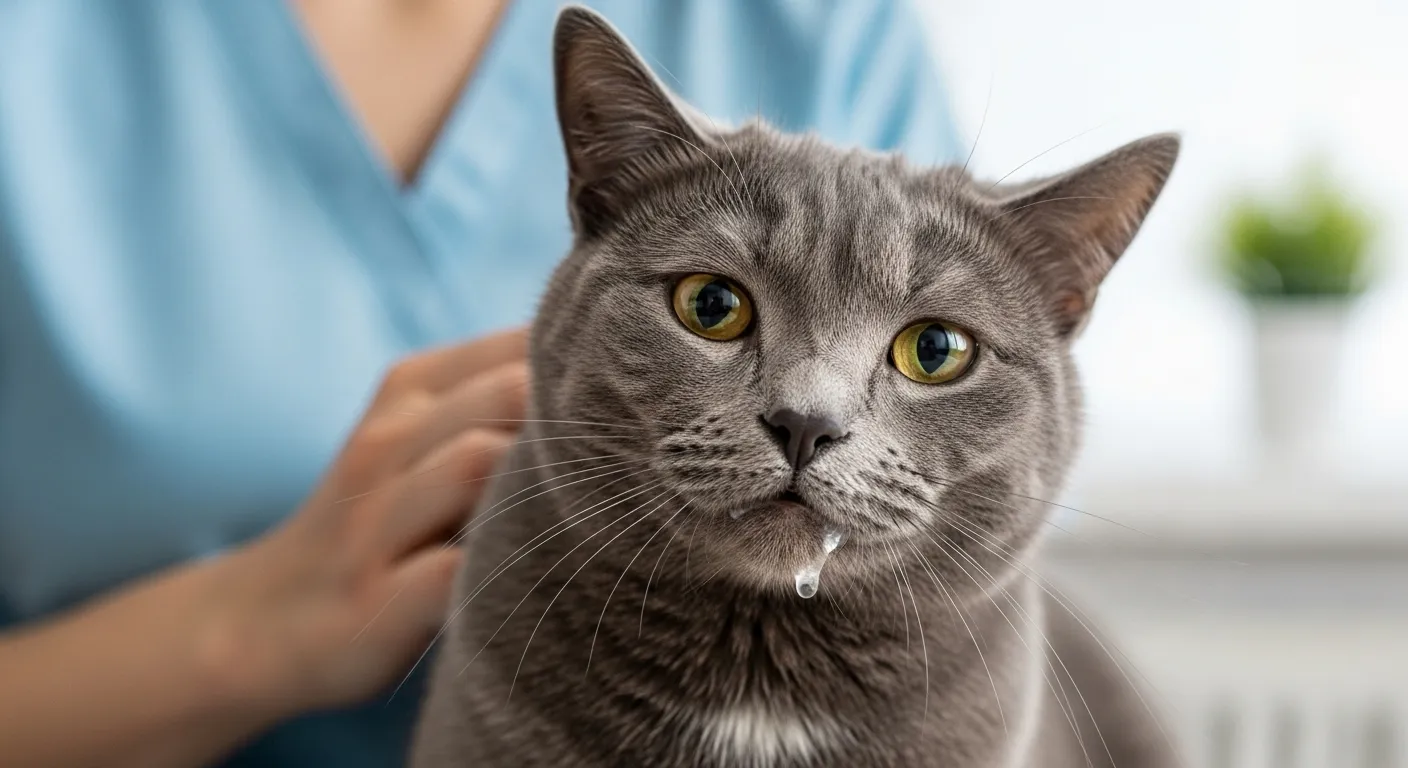Cats sometimes let saliva drip from their mouths. This can happen for simple reasons or point to a health issue. If your cat drools now and then, it might just feel good. But if it drools a lot or acts off, check with a vet. This guide covers the main reasons cats drool. It also tells you when to worry and how to help your pet.
Normal Reasons Your Cat Might Drool
Some drooling shows your cat feels at ease. It often ties back to kitten days when they nursed from mom. Here are common harmless causes.
When Your Cat Feels Happy or Relaxed
Cats drool during purrs or kneads. This happens when you pet them or they sit on your lap. The saliva comes from good feelings. It stops when they move. Many owners see this in calm moments.
- Look for a soft purr and half-closed eyes.
- It lasts a short time, like during a nap.
- No other odd signs, such as pawing the face.
Around Mealtime
Your cat might drool at food smells. This is like how people salivate before a meal. It is rare but normal. The drool goes away after eating.
Short Bursts of Stress
A quick car trip or loud noise can cause a little drool. Cats feel uneasy and produce more saliva. This fades once the stress ends. If it happens often, think about ways to calm your cat.
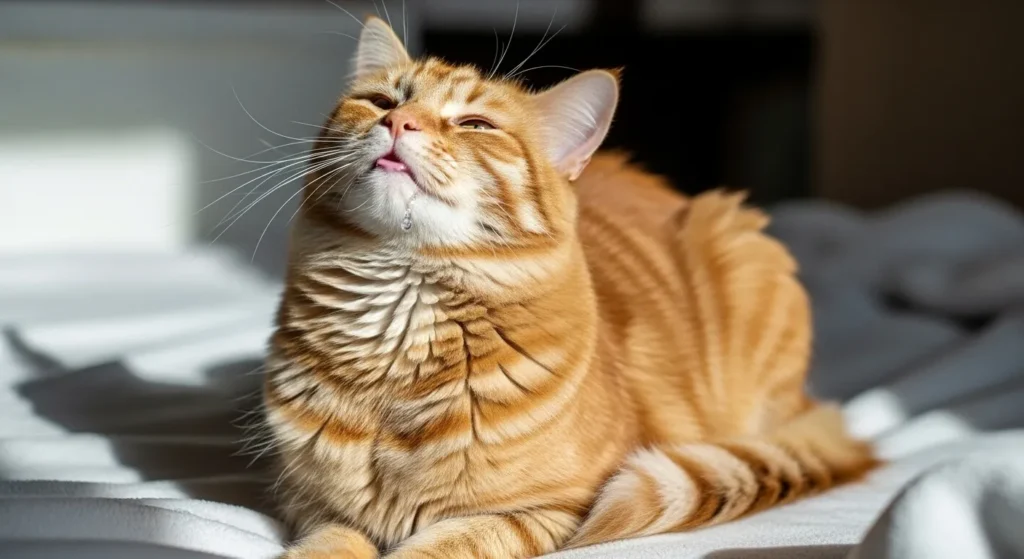
Signs of a Problem: Abnormal Drooling Causes
Excess drool often means something is wrong. Cats hide pain well, so watch close. Dental trouble tops the list. Up to 80 percent of cats over age three have gum issues. Other causes include sickness or harm.
Dental and Mouth Problems
Pain in the mouth leads to drool. Bad teeth, swollen gums, or sores make swallowing hard.
- Gingivitis or tooth roots erode.
- Cuts from fights or chews cause blood in saliva.
- Abscesses swell the face.
Your cat might drop food or rub its jaw. Bad breath comes with it. Vets clean teeth or pull bad ones to fix this.
Link to our pet symptom checker to spot mouth signs early.
Nausea and Stomach Upset
If your cat feels sick, saliva builds up. Hairballs, bad food, or kidney trouble can start it.
- Vomiting or no appetite follows.
- Kidney disease shows in older cats.
- Motion from rides adds to it.
Give small water sips. But see a vet for tests like blood work.
Toxins and Poisons
Cats chew plants or lick cleaners. This burns the mouth and boosts saliva.
- Lilies or pothos are common dangers.
- Human meds or flea drops irritate.
- Call the Pet Poison Helpline at 855-764-7661 right away.
Keep homes cat-safe. Check our guide on are pothos toxic to cats for more.
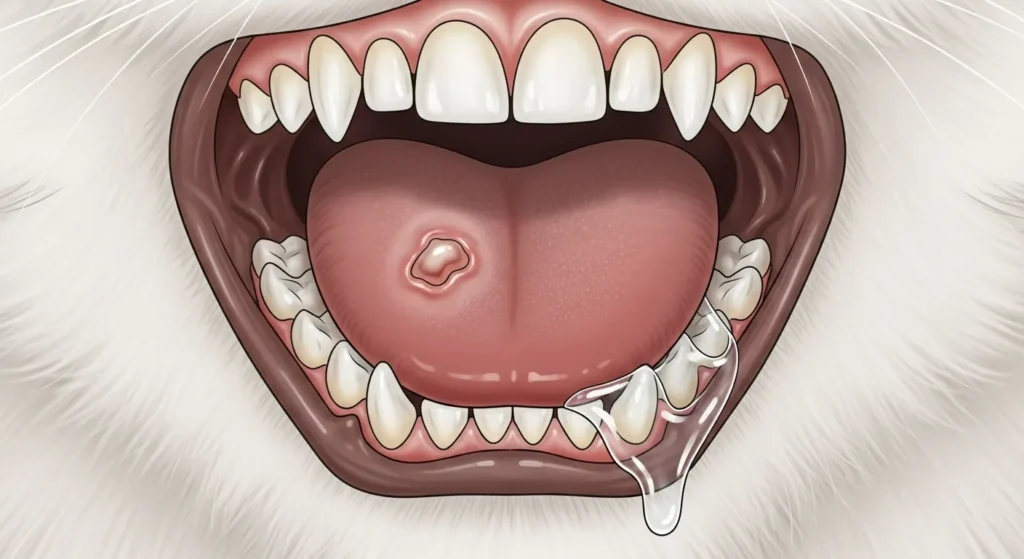
Stress and Anxiety
Long-term worry makes cats drool. New pets or moves trigger it.
- Ears flatten or they hide.
- Pheromone sprays help calm them.
- Meds from vets ease bad cases.
Try our pet compatibility checker if adding a new animal.
Other Causes to Watch
Rare issues include heatstroke in warm spots. Panting and weakness join the drool. Rabies is very uncommon in shots-given cats but needs quick action. Tumors in the mouth grow slow but hurt.
For heat signs, link to why is my dog shaking – similar alerts in pets.
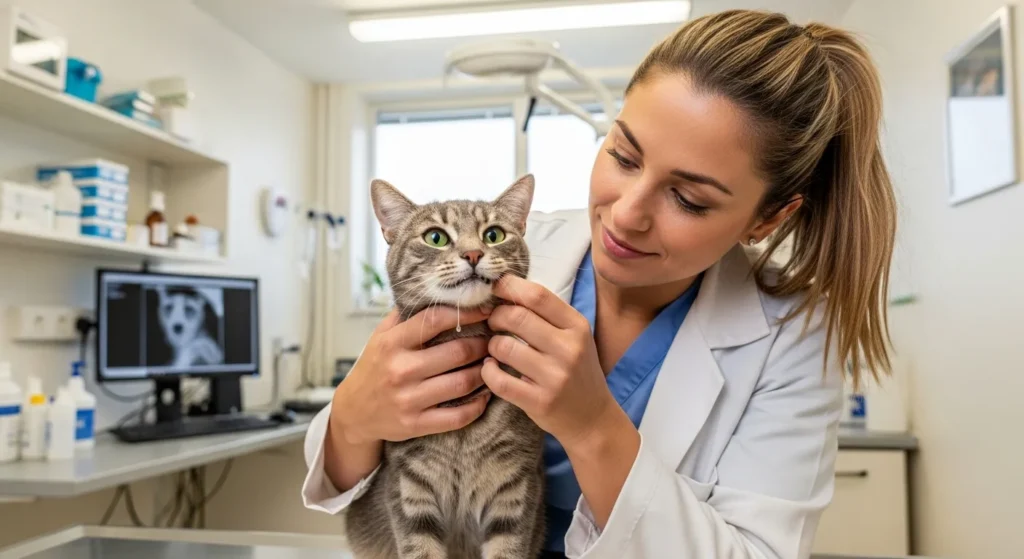
When to Take Your Cat to the Vet
Do not wait if drool lasts over a day. Go now if you see:
- Blood or smell in the saliva.
- No eating for 24 hours – see how long can cats go without eating.
- Swollen face or hard breaths.
- Vomiting, hiding, or odd walks.
Even small changes need a check. Cats get sick fast.
How Vets Diagnose and Treat Drooling
Vets start with a full exam. They look in the mouth and ask about habits. Tests include:
- Blood for organ health.
- X-rays for hidden problems.
- Cleaning under sleep for teeth.
Treatment fits the cause. Antibiotics fight infections. Fluids help nausea. Remove stuck items with care.
For more on cat health, use our pet breed finder quiz to learn breed risks.
Tips to Prevent Drooling Issues
Keep your cat healthy to cut drool risks.
- Brush teeth weekly with cat paste.
- Feed dental chews.
- Hide toxins high up.
- Watch for stress and play daily.
- Get yearly vet visits.
Use our pet age calculator to track senior needs.
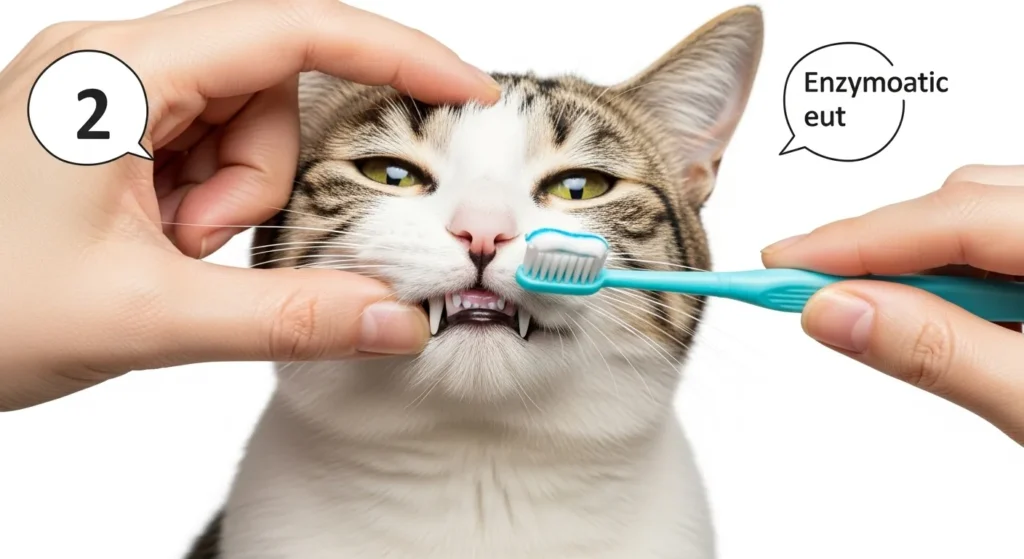
Drool can mean joy or trouble. Know the signs and act fast. Your cat counts on you for quick help. If in doubt, call your vet today.
